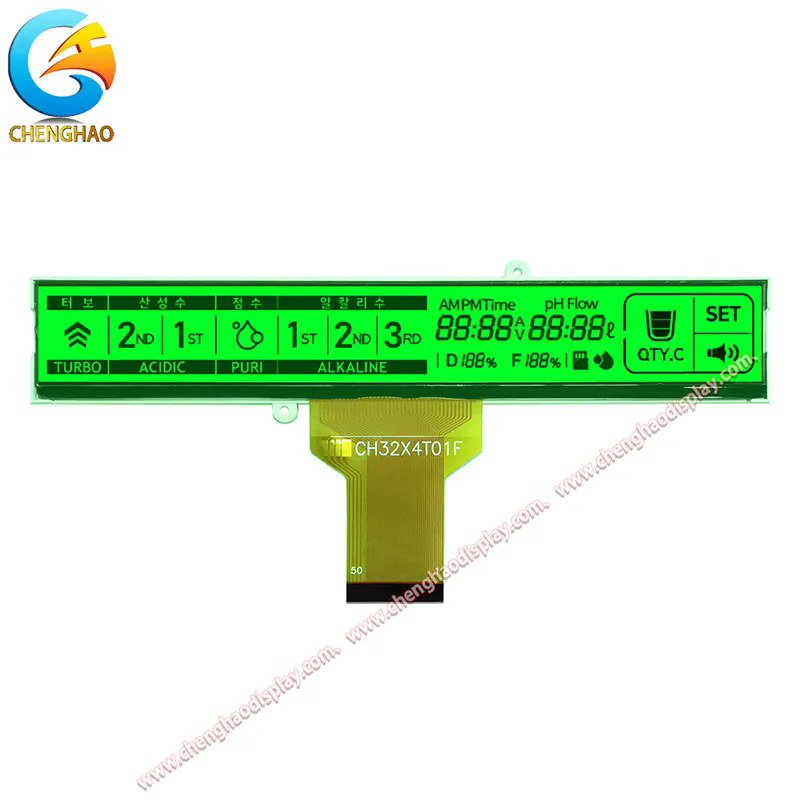Exploring the Monochrome LCD Module: A Versatile Display Solution
2024-10-16
In the world of electronic displays, monochrome LCD (Liquid Crystal Display) modules hold a special place due to their simplicity, reliability, and effectiveness. These displays are widely used in various applications, from handheld devices to industrial equipment. In this blog, we will delve into the features, advantages, applications, and future prospects of monochrome LCD modules, highlighting why they remain a popular choice for developers and designers.
What is a Monochrome LCD Module?
A monochrome LCD module is a flat-panel display technology that uses liquid crystals to produce images in a single color, typically black on a white background or vice versa. Unlike color displays that utilize multiple subpixels to create a wide range of colors, monochrome displays focus on contrast and clarity, making them suitable for various applications where detailed visuals are not required.
Key Features
- Low Power Consumption: Monochrome LCD modules are energy-efficient, making them ideal for battery-operated devices.
- High Visibility: The high contrast between the displayed content and the background ensures excellent readability in various lighting conditions.
- Compact Size: These displays are available in various sizes, allowing for integration into small devices without compromising functionality.
Advantages of Monochrome LCD Modules
1. Simplicity and Cost-Effectiveness
Monochrome LCDs are simpler to manufacture than color displays, leading to lower production costs. This makes them an economical choice for projects with budget constraints while still delivering reliable performance.
2. Robustness and Durability
Monochrome LCD modules are designed to withstand harsh environmental conditions. They are less prone to damage compared to fragile color displays, making them suitable for use in industrial and outdoor applications.
3. Long Lifespan
With no backlight required for monochrome displays, the lifespan of these modules is often extended. They can operate effectively for thousands of hours, reducing the need for replacements.
4. Easier Integration
Monochrome LCDs are easier to interface with microcontrollers and other electronic components. Their straightforward communication protocols allow developers to integrate them seamlessly into various projects.
Applications of Monochrome LCD Modules
Monochrome LCD modules find applications across various industries due to their versatility. Here are some common uses:
1. Consumer Electronics
From digital watches and calculators to kitchen appliances and remote controls, monochrome LCDs are widely used in consumer electronics for their low power consumption and compact design.
2. Industrial Equipment
In industrial settings, these displays are commonly found in control panels, machinery interfaces, and monitoring systems. Their high visibility ensures operators can read vital information quickly, even in challenging lighting conditions.
3. Medical Devices
Monochrome LCDs are often used in medical devices such as blood pressure monitors, glucose meters, and diagnostic equipment, where clear and concise data presentation is crucial.
4. Embedded Systems
In embedded systems, monochrome LCD modules are used to display status indicators, menu options, and other essential information. Their simplicity makes them a favorite among developers working on microcontroller-based projects.
Choosing the Right Monochrome LCD Module
When selecting a monochrome LCD module for your project, consider the following factors:
1. Size and Resolution
Choose a display size and resolution that meet your project requirements. Larger displays with higher resolutions can provide more detailed information.
2. Interface Compatibility
Ensure that the LCD module is compatible with your microcontroller or development board. Common interfaces include parallel, serial, and I2C.
3. Viewing Angle
Consider the viewing angle of the display, especially if it will be viewed from different positions. Modules with wide viewing angles provide better readability from various angles.
4. Temperature Range
If your application will be exposed to extreme temperatures, select a module rated for that environment to ensure reliable performance.
Future Trends in Monochrome LCD Technology
As technology advances, monochrome LCD modules continue to evolve. Some trends to watch for include:
1. Enhanced Features
Manufacturers are exploring ways to enhance the features of monochrome displays, such as adding touch capabilities or integrating backlighting for improved visibility in low-light conditions.
2. Sustainable Materials
With a growing focus on sustainability, manufacturers are investigating the use of eco-friendly materials in the production of monochrome LCDs to reduce their environmental impact.
3. Integration with IoT
As the Internet of Things (IoT) expands, monochrome LCD modules are likely to play a key role in displaying data from connected devices, enabling users to interact with their smart environments.
Conclusion
Monochrome LCD modules remain a reliable and cost-effective solution for a wide range of applications. Their simplicity, durability, and energy efficiency make them an enduring choice for designers and developers. Whether you’re working on consumer electronics, industrial equipment, or embedded systems, incorporating a monochrome LCD module can enhance your project’s functionality and user experience.



